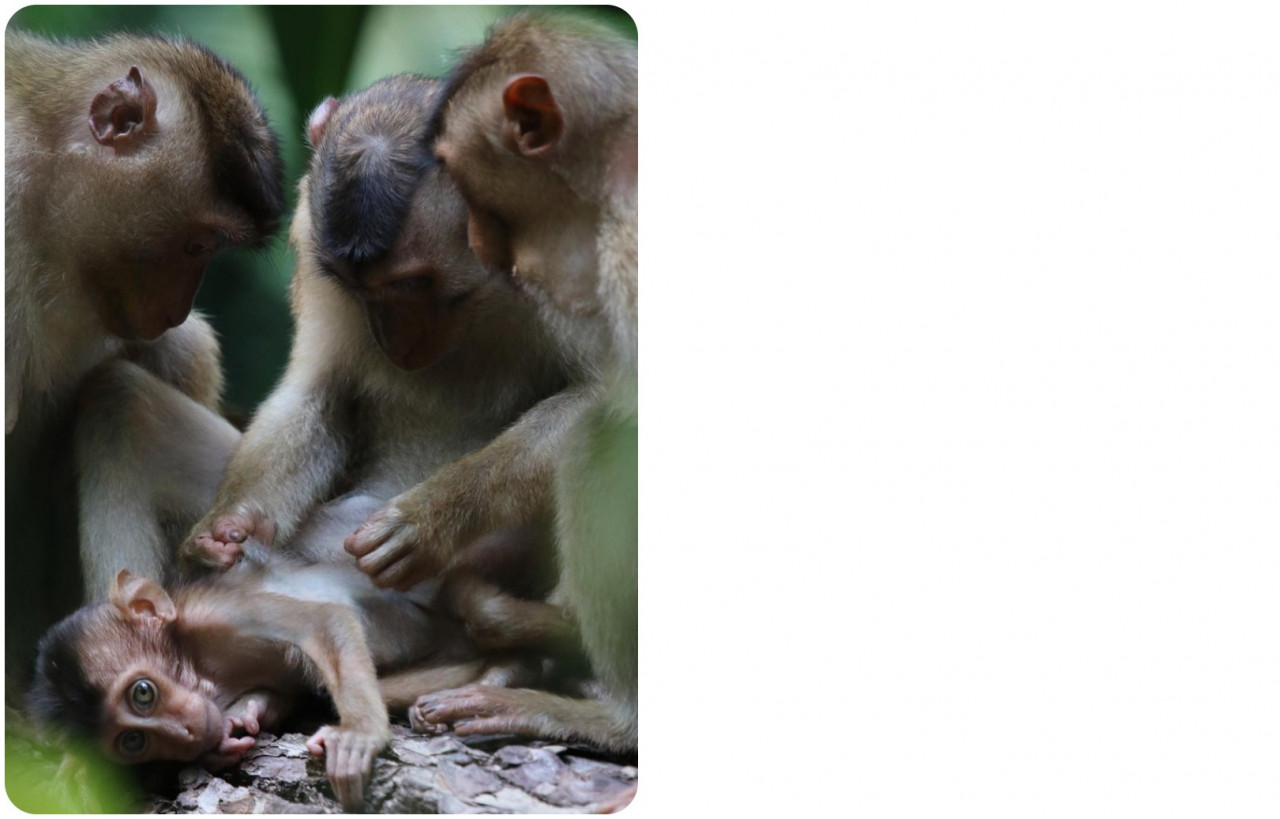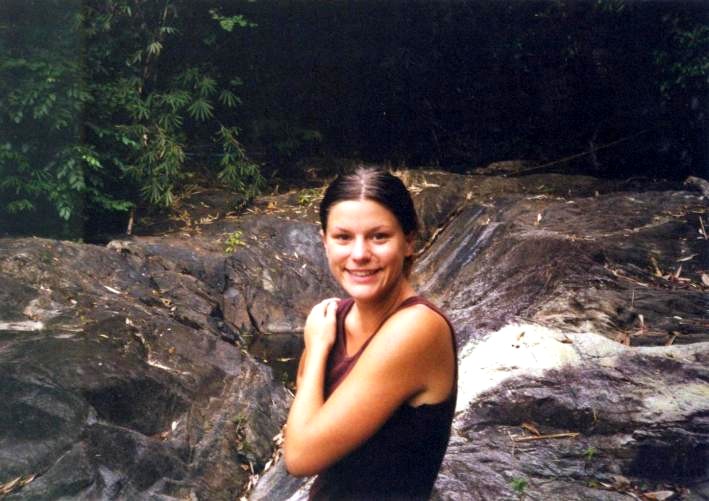THE recent discovery of a hybrid offspring between a male proboscis monkey and female silver langur in the Kinabatangan region of Sabah is bringing a renewed interest into the possible ecological collapse in Malaysia.
The report, co-authored by Dr Nadine Rupert, has been cited in scientific journals and news publications across the world including The Guardian, Business Insider, Newsweek, and many others. Dr Ruppert has become synonymous with the field of primate studies in Malaysia, tirelessly advocating for better protection of the species through her work.
She is a senior lecturer at USM and serves as vice-president for the Malaysian Primatological Society.
In an interview with The Vibes, Dr Ruppert shared more details about the latest report and her work, giving us a glimpse into the world of primates.
The Vibes: You were the co-author of the report that broke the news of a hybrid offspring monkey in Borneo. Could you tell us more about how you first came to make the discovery?
Nadine Ruppert: This study was quite special. I stumbled across a photo of an intriguing-looking monkey on social media and tried to gather more information about who took the photos, where and when – which was not as easy as it sounds as there was no specific information or leads given in the post.
I was not directly involved in taking the photos or data of the hybrid but played the role of connecting the people who, independently from each other, over many years, spotted the animal.
They consolidated the data and photos to assess what kind of primate this so-called “mystery monkey” of the Kinabatangan is.
My colleague, Stan Lhota, who studies proboscis monkeys in Indonesia, came up with the idea to conduct data analysis by measuring limb ratios of the monkey from the photos and compare them to the parent species, to gain a better understanding about the origin of the animal.
It turned out that the data is very much in line with our initial suspicion that this is a rare mixed-genus offspring of two distantly related primate species in the wild.

TV: What does this discovery indicate about the state of our natural ecology and primate habitats?
NR: It is likely that the mating is resulting from a lack of dispersal opportunities for the adult males of both species that may be facilitated by habitat fragmentation.
Adolescent males of both species usually leave their birth group to establish their own group (which usually consist of one male and many females) or they try to take over an existing harem of females by displacing the resident male.
However, when there is a lack of mating partners of their own species and no place to go, the urge of the proboscis male to mate may have led to the observed mating events with the ecologically similar females of the silver langurs that share the same space, whereby they may have displaced the resident langur male.
TV: How did you end up specialising in the research of primates? What were your early influences and inspiration?
NR: I always had an interest in nature and tropical rainforests. I remember a WWF campaign in Germany in the 90s which advertised in my favourite weekly comic that I could “adopt” a piece of rainforest in Brazil to protect it by buying the next issue.
I must have been nine years old at the time when I thought I could help to save the world through my actions.
This is a cliché, but yes, I loved Jane Goodall’s stories and discoveries about chimps and her persona as a strong pioneering woman in conservation.
She has inspired many modern primatologists and women of all backgrounds. I did not have the ambition to become a biologist as a child, I just loved to be outdoors, climb trees, and build tree houses.
I came to explore my first rainforest when I was travelling in Thailand after my A-levels, which made me decide to study tropical biology and animal biology at my home university in Germany.
Through my studies, I first came to Malaysia for a practical training and a few years later to conduct my PhD in zoology with USM.
I have always loved primates, but I first explored the role of pigtailed macaques in rattan seed dispersal for my PhD when it became evident that they play a vital role for these palm species in Malaysian forest.
After graduating, I was offered a position as zoology lecturer in USM and I started my own research group, exploring more primate species and their roles and adaptations to human-influenced environments, always with the goal to contribute to conserving these threatened and charismatic animals.
.jpg)
TV: What is your fondest memory throughout your career researching primates?
NR: It’s hard to pin it down to one memory. I think one of the most inspiring moments is when you can get close to the animals.
We habituated a research group of pigtailed macaques and dusky langurs to allow observers to follow them closely throughout the day to collect data.
We would never feed the animals, or touch them, or get closer than 1.5m for the safety of the animals and researchers, but after months and years of following the same groups, they eventually accepted us into their family.
When you’re alone in the forest with them, experiencing up close how they interact, realising their different personalities and quirks, and in these special moments when there is no distraction, when it’s just you and the monkeys, the sound of birds and crickets, and a sunset over the sea that you watch from a hilltop as the monkeys get ready to climb into their sleeping trees, you forget the worries of the outside world and feel a deep connection with nature and these animals. These moments are deeply touching and memorable.
TV: Is Malaysia a fertile ground for research in this field? Are there many new graduates and researchers being produced?
NR: Malaysia is a fantastic country to study biodiversity. We are a biodiversity hotspot, ranking No 12 in the world, with the second-highest primate species diversity in Asia.
The interest of Malaysian and international students to study Malaysian primates is big, and often interested undergraduate students approach me with their ideas to study a certain topic. And if we manage to get appropriate funding and permits, they will enrol for their postgraduate degree.
Of course, Covid has disrupted many field activities and we are still trying to get many projects back on track.
TV: What are new developments in the field that are keeping you inspired?
NR: What keeps me working in this field is how to address biodiversity conservation issues related to habitat loss and climate change, specifically concerning primates. Like most wildlife, primates suffer from habitat fragmentation and the impacts of living close to human habitation.
Different primate species have quite different challenges and adaptations to tackle human impact, and it is important to understand which specific conservation measures may work for a certain species.
At the same time, conservation deals with the human dimension, as we need to encourage communities and stakeholders to protect primates and their habitats. This is despite the often quite negative perceptions caused by close interactions with some primates, such as long-tailed macaques that tend to come close to people to obtain food.
It is inspiring to see the diverse network of people working on many different levels, such as science, education, arts, and politics, to achieve a simple, common goal: protecting primates. – The Vibes, June 23, 2022















.jpg)

